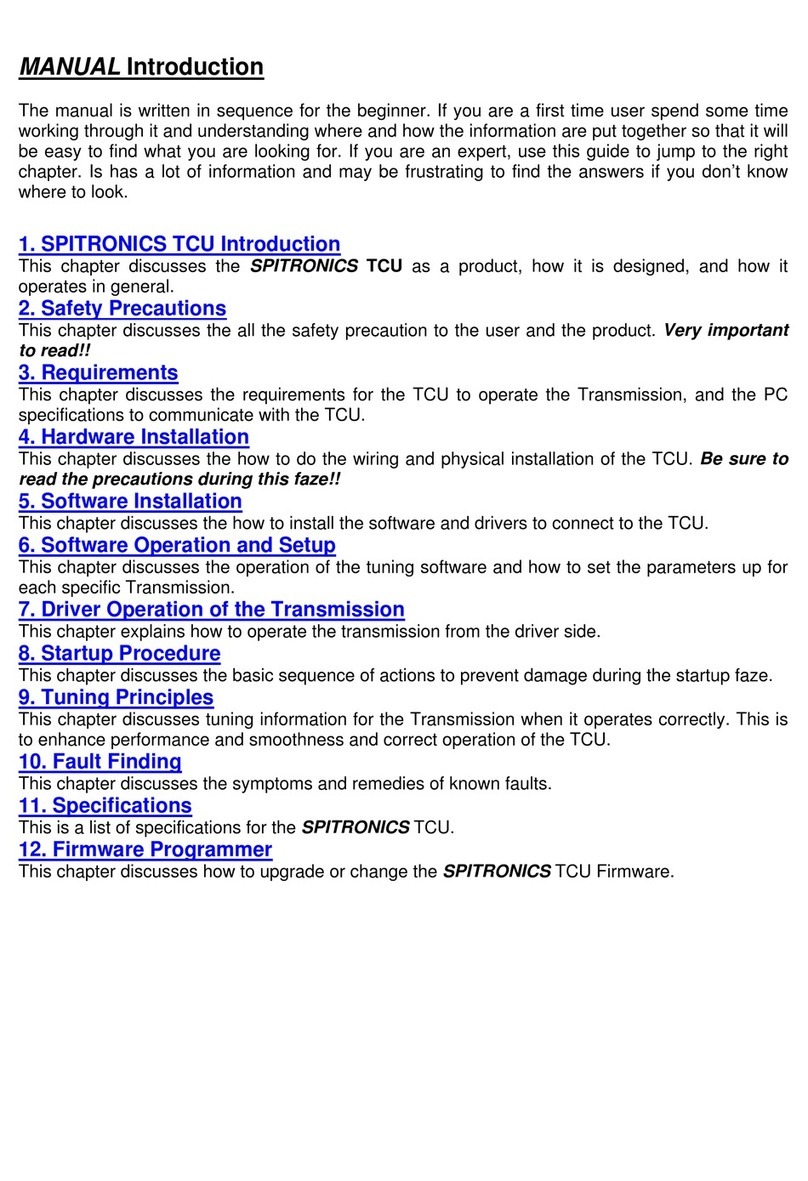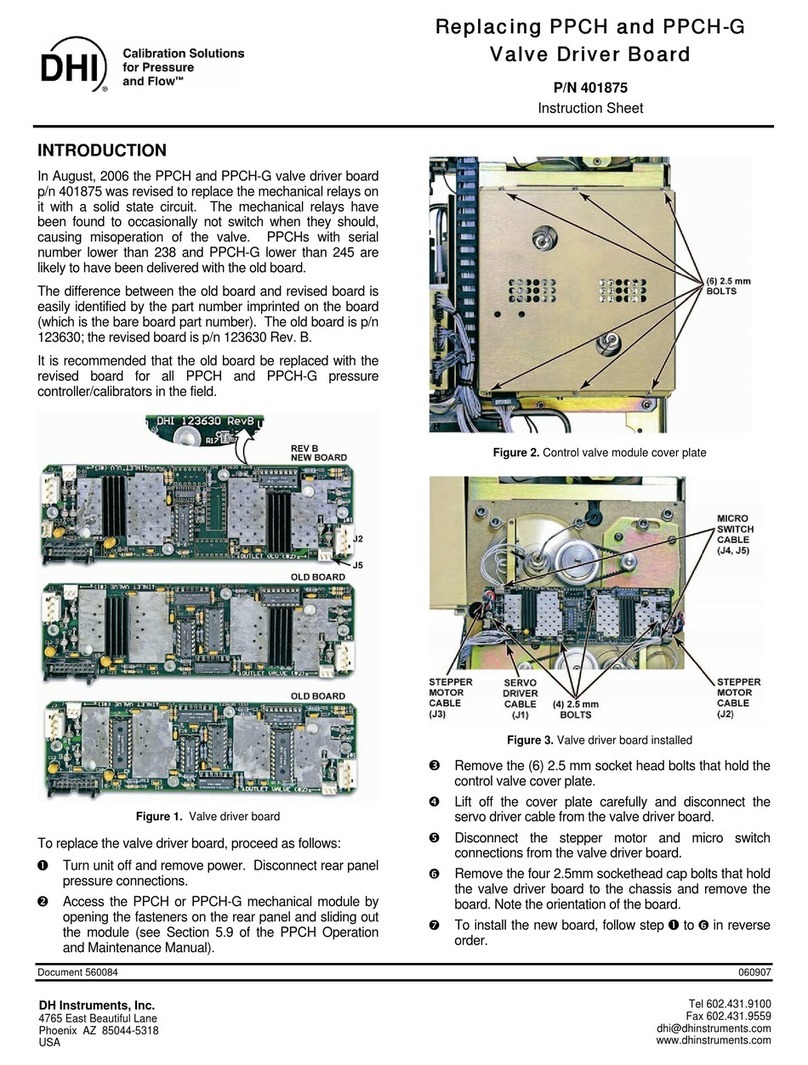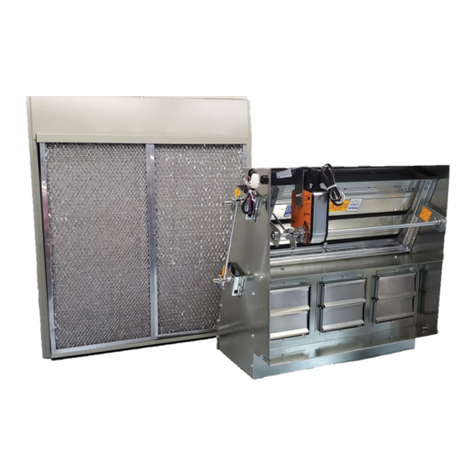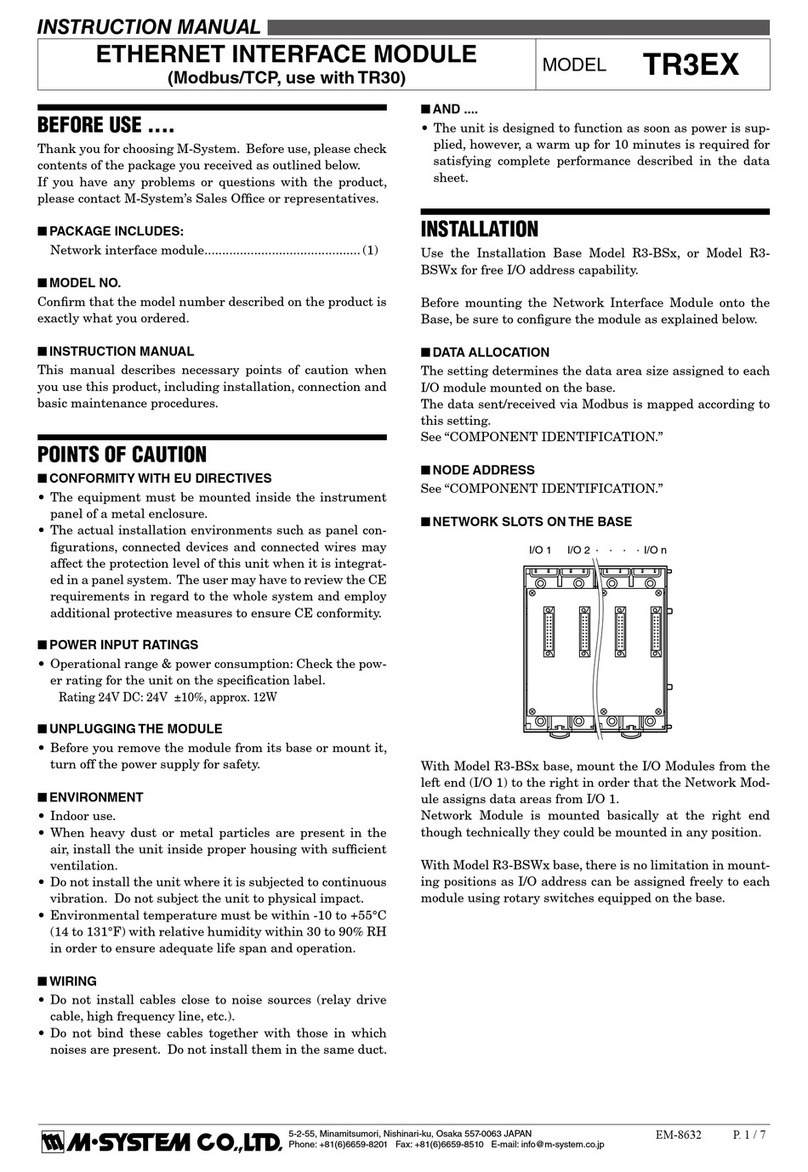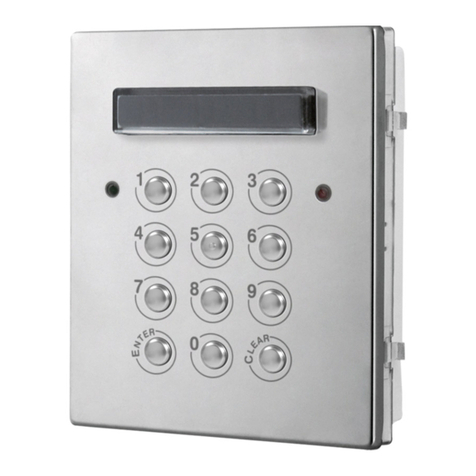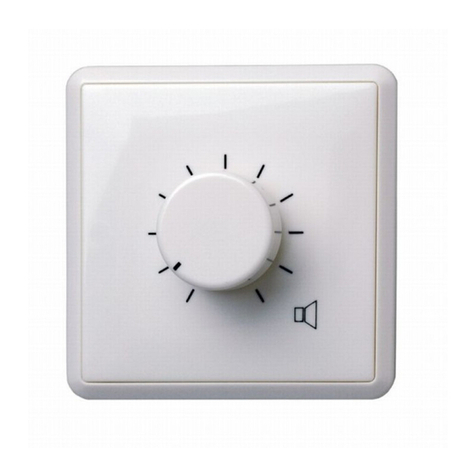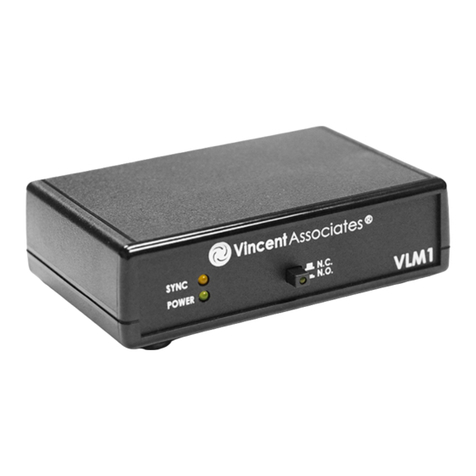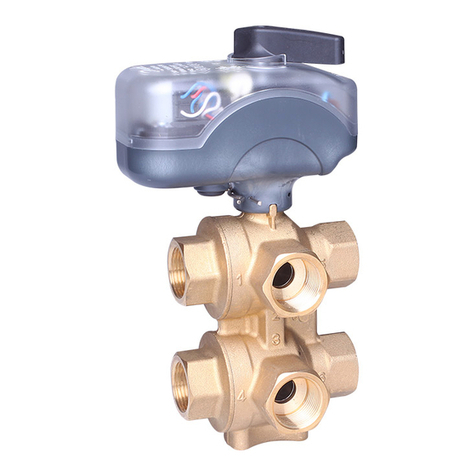Spitronics TITAN Standard User manual

MANUAL Introduction
The manual is written in sequence for the beginner. If you are a first time user spend some time
working through it and understanding where and how the information are put together so that it will
be easy to find what you are looking for. If you are an expert, use this guide to jump to the right
chapter. Is has a lot of information and may be frustrating to find the answers if you don’t know
where to look.
NB! Make sure you have read the Terms and Conditions on the website www.spitronics.co.za
before you install this ECU. By installing the ECU you automatically agree to these conditions.
1.TITAN Introduction
This chapter discusses the TITAN ECU as a product, how it is designed, and how it operates in
general.
2.Safety Precautions
This chapter discusses the all the safety precaution to the user and the product. Very important
to read!!
3.Requirements
This chapter discusses the requirements for the ECU to run on the engine and the PC
specifications to communicate with the ECU.
4.Hardware Installation
This chapter discusses the how to do the wiring and physical installation of the ECU. Be sure to
read the precautions during this faze!!
5.Software Installation
This chapter discusses the how to install the software and drivers to connect to the ECU.
6.Software Operation and Setup
This chapter discusses the operation of the tuning software and how to set the parameters up for
each specific engine.
7.Other Setup duties and Information
This chapter discusses other settings and equipment setup around the ECU.
8.Startup Procedure
This chapter discusses the basic sequence of actions to prevent damage during the startup faze.
9.Tuning Principles
This chapter discusses tuning information after the engine has been started. This is to enhance
performance and economy and correct operation of the ECU.
10.Fault Finding
This chapter discusses the symptoms and remedies of known faults.
11.Specifications
This is a list of specifications for the TITAN ECU.
12.Firmware Programmer
This chapter discusses how to upgrade or change the TITAN ECU Firmware.

TITAN ECU
Welcome
Congratulations on your purchase of the TITAN Engine Control Unit (ECU). We are sure that you
will be satisfied with this robust, compact and user friendly controller, which was designed to meet
today’s requirements. This ECU was developed around the people involved with Management
Computers. We hope that it will give you years of trouble free operation.
Please read this manual to learn about the safety precautions and design features of your ECU.
Failure to use and install this management system properly may cause injury to people or damage
to equipment. This Manual was written with the novice and professional engine tuner in mind, and
we would like to urge you to install the ECU according to our recommendations. This is the best
way to get the most out of your ECU.
Please read the Precautions before and after installation and before
connecting the ECU, to ensure that the correct procedures are followed.

1.TITAN Introduction
1.1ECU Design Philosophy
1.2ECU Control Philosophy
The TITAN Engine Control Unit (ECU) was designed to be a cost effective replacement for high
tech fuel managements systems. It uses unique features found in high tech systems, although it is
still easy to install and program. It is designed with the novice and professional installer in mind.
See the ECU Control Philosophy further in the manual to understand how it works.
TITAN is a South African made product and can be customized for dedicated engines and models.
It can also be combined to form larger complex systems for racing applications. It is a reliable
compact system which is easy to mount in the driver’s compartment. No external firing modules or
converter boards are necessary.
The ECU is customized for specific applications and the installer does not have to pay for excess
wires or unused features. Nor does he have to buy separate firing modules and MAP sensors
which will increase the price. Instead it is compiled with the correct harness and equipment as well
as software and maps to ease installation and setup. The software will also be calibrated for the
sensors of the specific engine.
This ECU comes in three models with standard harnesses to accommodate most engine
requirements namely Standard, Intermediate and Advanced units. The units are designed to be
small and compact and use the latest in high speed micro controllers with surface mount
technology. These units are machine soldered to minimize human error.
Firing modules that will reduce cost are incorporated in the ECU. Analog idle control is included on
board for one and two wire idle valves. External Stepper idle control units can be connected with
all three types of ECU’s.
The PC Tuning software is standard for all units. The specific ECU will blank out all tuning fields
not applicable.
Other key features are variable charge times which are MAP (Mean Absolute Pressure)
dependant, fuel cut-off features, launch control, lambda loop control, general purpose outputs,
altitude correction etc.
The different models are as follows:
TITAN Standard
This is the most basic and cost effective form of the ECU. It is a single channel trigger,
(Magnetic or Hall input,) one coil output and two batch injector outputs. The injectors are
pulsed 180° out of phase. This ECU is suitable for cars with a distributor and single coil.
Engines such as 3,4,5,6 and 8 cylinders can be used. For 12 cylinders the intermediate
ECU is recommended for more injector outputs. Electronic distributors do not need to be
modified for fazing. Idle control and launch control is standard.
TITAN Intermediate
This ECU is for more complicated trigger setups in distributors like Toyota 24T+TDC,
Nissan Optic, all crank gears, and customized optic disks etc… It does Split-Sequential
fueling on 4, 6, and 8 cylinder injector banks. It has one coil output. Idle control and launch
control is standard.
TITAN Advanced
This ECU is designed as the intermediate but with the added feature of multi coil or wasted
spark. The ECU has 6 trigger outputs which can be used for different combinations of

injectors and coils. Sensor inputs can be 60-2, 36-1, 24T+TDC and just about any kind of
hall or magnetic setup on the engine. Coil driver outputs can be for single or wasted spark
coils. It can do idle control and launch control is standard.
All wiring harnesses use screened cables for neatness of installation and to prevent interference
from other electronics or electromagnetic pulses, which may otherwise cause erratic behavior of
the ECU.
External MAP sensors are used to reduce vacuum line length into the cab which will delay reaction
time due to the mass of the air volume. It also makes the ECU more versatile to adapt for different
aspirations on engines with or without turbo’s or superchargers.
1.1 ECU Design Philosophy
The ECU was designed with many factors in mind. First is that engine management does not have
to be complicated and reserved for a selected few mechanical geniuses. Just like the old days, if
you take some time to read a few books and dare to use a screwdriver and timing light, you could
get to know you carburetor and ignition pretty well and become handy in tuning and servicing your
own vehicle. If you ask me is that nowadays it is n lot easier. With all the information at your
fingertips on the internet, and manuals teaching you what the pro’s had to find out over the years,
there is no excuse for illiteracy. You plug a laptop into the Engine Control Unit ECU and use a
lambda sensor and start playing around. The manuals will even explain how to do it. You don’t
have to go and buy a set of jets and painstakingly change them around to get the desired effect.
With the ECU you can change them while driving! However to get people to read the manual
before picking up the phone or paying someone else, is quite a problem. Obviously not for you.
Thanks!
Secondly is that only the necessary features are added and no gimmicks which make the ECU too
complicated. No unnecessary load sites and too fine tuning sites which make the system slow and
difficult to tune are added. If an engine has performance, economy and ease of use then that is all
you require. Why make it complicated? All those unnecessary electronic components is just more
things that can fail and escalate the cost.
Thirdly, no engine manufacturer uses the same equipment and sensors as the other. The car
manufacturer’s systems even differ between models. So a one management fits all is not a good
idea. You end up paying for a lot of things you don’t use and a lot of things on the engine that you
can’t use, and it takes time figuring out what you need or don’t need for the installation. There is
also a lot more components that can fail and take up space.
So what makes the TITAN ECU so different? Well look at some features. Very small, Split-
Sequential, internal modules, customized firmware for most engines, use the sensors and
equipment on the engine, easy to install and tune the enthusiast, maps included, no dynamometer
required, easy to repair by local agents, - to name but a few.
The ECU is designed to be understood by mechanics and enthusiasts. Just like a carburetor it has
a main jet and an idle jet. The ECU will calculate fuel from these settings using the MAP sensor.
Only two settings and your car should be able to go. Again just like a carburetor the ECU has to
compensate for cold starting, slow running, fast running power valve, acceleration and automatic
gearbox damping and idling etc. Obviously we can add air temperature and battery voltage to it.
We could even have the ECU do other stuff like fuel cutoff on down hill’s, fan control and air
conditioner cut-out during up hill’s, rev limiters, launch control to name but a few.
On the timing side there was always the dynamic timing with the weights and the vacuum timing
with the vacuum canister. You had to pay around 1k to have your distributor re-curved if you
switch a cam or soup it up. How easy is it now with a laptop? You can even have a timing curve

that goes up, down and up again. Impossible with weights! Also easy nowadays is to install a
turbo. Now you have to retard the time under boost. Easy!
So please do a little homework and save yourself a lot of hassles and money of course. And
please read the manuals!
Features
•Accurate Split-Sequential Fueling – Gives better performance and fuel consumption due to
atomization on each cylinder is the same.
•Internal Coil & Injector Drivers – No extra cost for TP100 or custom firing modules.
•Single & Multi Coil Spark System – Use standard coil packs on the engine.
•Use Sensors on Engine – No need to do modifications on distributors or converter boards or
TP500 modules.
•Custom Bolt-On Timing Gears – some engines require different gears to ease installation like
the 36-1 for the Lexus Engine which comes as a bolt on unit. No modifications to fit these
gears.
•Cold Start & Idle Control – This functions will ease with starting a cold engine and keep the
RPM’s constant when air conditioners or automatic gearboxes draw power from the engine.
•Launch Control Standard – These are for racing applications to increase the boost pressure on
the line and eliminate Turbo Lag. Note that the buttons are optional.
•Two General Purpose Outputs – This can be used for fan control, shift light, Aircon Cut-Out on
Pull-Off or Up-Hill etc.
•Standard Harness – No need to keep several harnesses in stock for different engines.
•Compact Electronics – This will make the ECU easy to hide under the dashboard as it takes
very little space.
•SA Design with Agent Repair Training – No need to send to manufacturer for repairs as the
reputable agents will be equipped with repair training end test equipment.
•Complete Kits for Most Engines – Even rare combinations can be customized on request.
•Cost Effective – No need to buy expensive systems as all the necessary features are included
with the ECU.
•Rotary Systems – The 2 rotor engines use a normal Advance ECU.
•External Map Sensor – easy to change between 1Bar, 2.5Bar & 3Bar configurations
•Easy DIY Instructions – Save a lot of money on installation if you are a person who is up to the
challenge.
•Start-Up Maps included – This will make for easy start-up & tuning with the help of a Lambda
sensor
•User Friendly Tuning Software – You don’t have to be a specialist to understand how the
software works. Just read the manual paying attention.
•Tuning map can be locked to prevent tampering. Useful for engine builders to give guarantees.
•No Dyno Required – Tune your own vehicle and save some more money. Just following the
instructions in the manual carefully.
(Note that the last four points are for the person who is handy with tools and understand wiring
and operation of an engine. You don’t have to be a Boffin though. If you are not sure, download
the manual and drawing and read through it first. It’s free of charge!)
1.2 ECU Control Philosophy
If you read the design philosophy, then you know we designed this system better than a carburetor
but not necessary more difficult. In fact I’m going to explain it around the trusty old Weber. As we
market this system as DIY and self tune, I am going to explain some basics as well. Do not be

scared of the terms and the electronics. If you worked on a program like Windows Excel, you
should be able to breeze through this.
On a carburetor you had a low pressure fuel pump which only job was to fill the bowl with the help
of a needle and seat. Then the fuel was drawn with suction through the jets into the intake
manifold. With fuel injection you need a high pressure pump around 3.5Bar which can deliver
enough flow to keep a constant pressure on the injectors. This is the job of the fuel pressure
regulator. It is normally set around 2.5Bar, but will vary the pressure with intake vacuum. This
means that if the vacuum drops to absolute the fuel pressure will also drop so that a pressure
difference over the injector is constant. Remember the tip of the injector is subjected to vacuum
which will suck more fuel through it at idle than at wide open throttle WOT. So the regulator must
have a vacuum line connected from its diaphragm to the intake after the throttle body. This is also
true for boost pressures with turbo’s and superchargers. So before you begin, power the fuel
pump and check the pressure and leaks. The ECU will not know if this system fails except maybe
a lean mixture indication on the air/fuel ratio sensor (lambda).
On the carburetor, fuel is metered by the main jet and ventury size. The jets are fixed and can be
varied by changing them. This jet must be large enough to fuel the engine on normal load
conditions. With the ECU Fuel is metered by opening the relevant injector for a specific time. The
more air is let into the cylinder, the more fuel is required and the longer the injector is opened. The
ECU uses the Map sensor signal to calculate how much air goes into the cylinder. Changing this
amount is done by adjusting the main jet bar on the fuel maps. This value is the main fuel
parameter and all other calculations are based around it. That is why we set it first. See Setting the
main Jet.
On the Weber you have idle jets which ensure that enough fuel and air is supplied for idling. The
ECU also has this Idle Jet. It is calculated with a portion of the main jet value and is faded off as
RPM’s increase. This is the second setting to be made and is done with the engine idling in neutral
with no load.
On automatic cars the air idle adjuster is made a bit larger to accommodate a richer mix if the car
has to idle in drive. With the ECU you simply raise the dots around the vacuum bar on the Vacuum
map under Fuel maps. The vacuum bar will settle on different values between neutral idle and
drive idle. This means 2 idle jet configurations.
Normal running on the Weber is only done by the main jet and ventury size. On the ECU you have
the main vacuum map and a cruise map to vary the fuel for different conditions. Higher gears will
decrease the vacuum and lower the RPM’s. That means you can vary fuel ratios and even
compensate for different gears.
For WOT the Weber sometimes had 2 tricks. One is the power valve which will enrich the mix at
lower RPM’s and some had a separate jet on top to add fuel at high RPM’s. The ECU has a RPM
Map just for WOT. Now you can adjust the mix through the whole of the RPM range.
Carburetors all have an accelerator pump. If you press the throttle too quickly, the manifold
vacuum falls away and the flow over the ventury is for a moment not enough to suck enough fuel
for the change. Also during the transition from idling to main jet create this problem. On the ECU
vacuum is measured very fast and as the injector sits right at the intake valve, the ECU react
almost instantly. There is however provision for extra fuel and two accelerator pumps is
incorporated. One is working with vacuum signal and one working with TPS signal. If you have a
slow vacuum signal it is better to use the TPS signal, as it is connected to your foot.
For cold starting the engine requires more air and richer fuel mixture. The Weber had a trick where
you press the throttle once. The choke butterfly will close completely and the accelerator pump will
squirt some fuel to prime the mix. The bottom butterfly will also be forced open slightly. If you start

the engine, a vacuum will form in the ventury sucking harder on the idle jets and main jets and so
make the cranking mixture rich enough for starting. The moment the engine starts, a vacuum
canister will force the choke butterfly open slightly causing air to flow freely through the ventury. As
the engine heats up the choke butterfly will open completely also releasing the bottom throttle to
its normal position. The ECU does this by opening the idle valve to accommodate for more air. It
will enrich the fuel using the temperature compensation map. It will squirt a set amount of fuel
(Start Prime Pulse) the moment the engine starts to crank. When the engine starts, it will enrich
the mix (Start Enrichment) for a few seconds fading it out. As the engine heats up, the ECU will
lean out the mix on the water temp compensation map and reduce the idling RPM to the normal
setting.
Furthermore the ECU can compensate for air temperature correction where hot intake air is
thinner requiring a leaner mixture. It can also compensate for battery voltage deviation which
would influence injector opening times causing mixture deviations. Electric idle valves help the
engine not to pre ignite after the ignition is switched off. This is due to petrol spontaneously
combust on hot carbons in the engine. With the ECU fuel is cut off immediately during power off.
So no pre ignition here. On steep inclines the carburetor always have a problem where the bowls
overflow or the main jets are exposed to air casing the engine to loose power or flood. This is no
problem for the ECU as the petrol is in a closed pressure loop and the injectors can work upside
down. Another problem of the carburetor is peculation due to engine compartment heat. The fuel
simply starts to boil and then flood the carburetor causing the engine to stall. With fuel injection
again the system is under pressure resulting in a much higher temperature for peculation. Also the
fuel is circulated in the tank causing it to cool down.
On the timing side, the normal distributor had 2 dimensions for timing alterations. Firstly it had
weights that did a single advance with RPM curve till a certain RPM and then it was a flat curve.
This same curve was also programmed into later firing modules. For this dynamic timing the ECU
can alter the timing in degree divisions every 100 RPM’s. It can go up and down which is of great
advantage to top end camshafts.
For vacuum timing the mechanical vacuum canister was the norm. Some had an adjustable spring
tension but they always followed a fixed curve in one direction. The ECU uses the Map sensor
signal and the vacuum map to add or subtract timing especially for turbo engines. Again any
combination in degree divisions can be adjusted making this a nice feature to add power and
economy. It also helps to keep the plugs clean.
On the coil side, the ECU is far better than the old point condenser system. It uses variable dwell
timing which means that the coils is always charged the same time to ensure that spark energy is
at a maximum. Some systems may not have enough time at high RPM’s to achieve this. However
faster coils may be used. The ECU will calculate when to start charging the coil to ensure it is fully
charged before it will be discharged via the spark plugs. This method will prevent wasted energy
which heat up the modules and also ensure a proper spark every time, even during cranking when
battery voltage is low.
Now comparing the carburetor to a fuel management system we can clearly see the advantages.
There are lots of other features like fuel cutoff during deceleration, idle control for automatic cars,
and air conditioners, launch control etc. To successfully tune the engine yourself may take a bit of
trial and error. Two conditions to always be careful of. Never go too lean on WOT mixtures and be
careful of too much advance in the timing department. Your ear will tell you most of the time but it
is not always possible to hear pinging. A good lambda sensor however will indicate if you are on a
lean mixture.
2. Safety Precautions

The following guidelines will ensure proper operation the first time. Failure to install equipment
correctly may damage it or other equipment permanently. These failures will solely be the
responsibility of the installer and no guarantees will be given by us. Make sure you have read the
Terms and Conditions on the website www.spitronics.co.za before you install this ECU. By
installing the ECU you automatically agree to these conditions. All equipment is tested before it
leaves the factory. We accept no liability for malfunctioning of the equipment, or to injury that may
result from installation or the use of the equipment. We also accept no liability for costs of traveling
of transportation of the equipment or parts or vehicle recovery due to failures of any equipment.
Please read the instructions and drawing and make sure you understand before you begin.
2.1 Operator Safety
•Use only proper tools and products suited for auto installations. Sub standard products and
installation procedures may cause failure to the equipment having your customer break
down in dangerous areas.
•Use correct thickness of wire to carry the entire current requirement for that circuit. Too thin
wires will heat up and may start a fire causing injury.
•Use fuses to protect each circuit separately. Joint circuits require large fuses which may
heat and melt lesser circuits causing fires.
•Solder joints, and cover it with shrink sleeve to prevent loose connections which may cause
fires. Space solder-joints so that they do not sit next to each other minimizing the chance of
a short circuit.
2.2 Equipment Safety
•Never connect a TITAN ECU on the older EMU Hall cables without the cable modification.
See compatibility.
•If you have a firmware programmer, do not load Ver. E1 EMU firmware on the Ver. E2
TITAN ECU or visa-versa. It will damage the Micro because they are different.
•Never switch the power on, if the ECU enclosure is not grounded properly – this may
destroy some sensors.
•Never switch the power on with the coil connected. If the Trigger Level Output logic is set
wrong it may destroy the coil or driver. Leave the 10 way connector disconnected when you
switch the ECU on the first time. Then set the coil logic right, save the data and switch off.
Then connect the 10 way connecter and switch on. Ensure that the fuse is the minimum
required value. Too large fuse will not blow resulting in driver or coil destruction.
•Test the installation with the test procedure before connecting the ECU – this will prevent
damage due to faulty wiring.
•Connect the injectors to its own relay – other items will cause a voltage drop and result in
leaner mixtures.
•Connect the relay supplies directly to battery positive via a fuse as shown in the drawing –
otherwise voltage drops will still cause lean mixtures.
•Install the free-wheel Diodes on relays to prevent spikes from interfering with the ECU.
•Break out pins 1,4,6,7,8 & 9 on USB to RS232 converters and on serial cables. These pins
are used for other inputs and outputs of the ECU. It will hang the ECU and damage coils or
drivers. This does not apply to Spitronics USB converters.
•Make sure that relay pin numbers of the relay correspond with the drawing. A different relay
may damage the ECU.
•Check that coil connections are secure. Loose connections will damage the internal driver
Mosfets.
•Do not connect screen wires on the engine. The starter will draw current through then
melting the harness.
•The TPS must be connected correctly as it may damage the ECU or TPS permanently.
•Ensure that wires are kept away from hot or sharp parts in the engine. Also ensure that
engine movement does not put strain on the wires, as metal fatigue will break the wires in
time, resulting in ECU failure.

•Ensure a proper earth between battery negative and chassis and also between battery
negative and the engine. Do not earth the engine on the body or the body on the engine.
•Do not put cutout switches from coil negative to ground as this may burn the coil
permanently. Rather break the supply line (Red Wire) through a switch so that the module
does not have power.
•Do not disconnect the battery while engine is running. The alternator will create high
voltage spikes which may damage the ECU permanently. Ensure that all connections from
the battery and alternator are secure. Also connect the alternator charge wire directly to
battery positive and not to the harness somewhere.
•Do not connect the ECU outputs directly to solenoids or fuel pumps. It is only strong
enough to pull in 2 x DC 12V relays. It can draw only 2A to ground.
•Test the coil resistance to see which type coil you are using and if it is still functional. This is
important to program the correct parameters. See Coil Selection. If you are not sure take it
to your agent for a free test, or start with the lowest Coil Time value namely 2 milliseconds.
•The trigger input may not be connected to coil negative. The high voltage spikes on coil
negative will damage the unit permanently.
•Make sure about the correct Jumper Settings before you switch the ignition on.
3. Requirements
3.1 Engine Requirements
We have to assume the vehicle you are using is either an existing electronic fuel injection model or
has been converted to fuel injection by the addition of a throttle body, fuel injectors and high
pressure fuel pump and filter.
You need to have the following components fitted: (Available from your agent)
•Fuel pump capable of a continuous pressure of 3.5 bar.
•Fuel pressure regulator.
•Fuel injectors matched to engine requirement.
•Throttle body with Throttle Position Sensor (TPS). (optional)
•Water temperature sender.
•A locked (no internal advance) distributor using either hall, magnetic or optical signal
generation or any Crank Trigger device.
•Good quality suppressed HT leads.
•Air temperature sensor (optional)
•Lambda sensor (optional)
•Idle valve or stepper motor (optional)
Notes on Ignition System
The ECU can be used for fuel control only, provided an ignition pulse output is supplied to the
ECU. This pulse must be a 12V to ground signal and may not be connected to coil negative. The
high voltage spikes on coil negative will damage the unit permanently. Connecting to an ignition
output is necessary to provide a signal for controlling the injector timing.
It can also be used for an advanced map-able ignition controller only. You can accomplish locking
a conventional distributor by either welding or bolting the weights together and disconnecting the
vacuum advance unit.
3.2 PC Requirements
•Pentium 4 Laptop
•Windows XP with service pack 2 or later
•Serial Port or USB device with USB to RS232 Converter (19200 baud rate)
•Screen Resolution 1024*768
•Ensure that the latest drivers for the PC are installed.

This software is developed under the latest Delphi environment. It requires a lot of processing
speed and may not run on older computers.
4. Hardware Installation
4.1 Compatibility to the old EMU series
4.2 Harness Selection
4.3 Jumper Selection
4.4 Installing Procedure of the ECU
4.5 Injectors
4.6 Sensors
4.7 Idle Control
4.8 Launch Control
4.9 Micro Fueling
4.10 Additional Wiring
4.11 Coil Selection
4.12 Setting Timing
4.13 Fuel Supply
This chapter tells the user how to install and wire the TITAN ECU. Be sure to read precautions
before attempting installation. There are a few do’s and don’ts’ to consider as well.
4.1 Compatibility to the old EMU series
Note that the TITAN ECU may be connected onto magnetic EMU harnesses directly but that you
have to modify all Hall harnesses. On the 12 way connector Pin 5 must be moved to Pin 11 and
Pin 6 must move to Pin12. Failure to do this will damage your sensor permanently. The old EMU
will still work with this cable modification.
The EMU series will not work on the E22 TITAN series cables. Thus backwards compatibility is
possible but not forward compatibility.
4.2 Harness Selection
The TITAN ECU has only two harnesses for all engine configurations. E22 is a 12Way harness
that connects all the inputs or sensors to the ECU, and E21 is a 10Way harness that connects all
the outputs to the ECU.
•Magnetic or Hall sensors are selectable on the ECU with addition of a load resistor to
reduce interference.
•On the 10Way harness the combination of injectors and coils differ between engines.
Connecting a coil on an injector driver will overcharge the coil and may destroy the driver or
coil. Ensure correct wire selection according to the drawing.

4.3 Jumper Selection
The TITAN ECU has standard harnesses for all engine configurations. The two basic groups of
sensors require 12V for Hall and Optic sensors and 5V for Magnetic sensors. This selection
between the supply voltages is done by jumper settings. There is also a stronger pull-up resistor
required for the hall or Optic sensors and they are also selected with the Jumpers. See the
illustrations on how to set these jumpers correctly for you application.
12 Way 10 Way
TITAN ECU
JP1
JP3
JP2
JP4
4.3.1 Trigger Sensor
JP 1 and JP2 are used for this pickup.
4.3.2 TDC Sensor
JP 3 and JP4 are used for this pickup.
4.3.3 Magnetic Sensors
With this sensor JP2 & JP4 acts as a filter resistor which is only used if interference is detected on
the RPM signal.
JP1 & JP2 are always set to 5V as in the drawing.
JP1
JP3
JP2
JP4
JP1
JP3
JP2
JP4
Magnetic
2K2 Filter Off Magnetic
2K2 Filter On
4.3.4 Hall / Optic Sensors
With these sensors JP2 & JP4 acts as a Pull-Up resistor which is normally on. If the sensor has a
weak signal these jumpers may be selected to Off to reduce load on them.
JP1 & JP2 are always set to 12V as in the drawing.
JP1
JP3
JP2
JP4
Hall / Optic
2K2 Pull-Up On
JP1
JP3
JP2
JP4
Hall / Optic
2K2 Pull-Up Off
4.4 Installing Procedure of the ECU
•Locate a convenient mounting position for the ECU inside the cab for water protection.
Humidity and heavy duty service units are available on request and will be custom made.

•Ensure that the enclosure of the ECU is grounded with at least two metal screws onto the
metal body of the car. If the ECU is not bolted directly onto an earthed metal surface, you
MUST make sure that you run a 4mm2ground wire to one of the ECU’s bolt holes,
otherwise your ECU will not power up and you will damage the MAP sensor permanently.
There may flow as much as 30A through the earth wire.
•Connect the two black wires firmly to the enclosure base. This is the screens of all the
cables and also the ground wires of the TPS Lambda and temperature sensors. Bad
connections may damage the sensors.
•Feed all wires of the harness, except the serial cable, through a hole in the firewall. A good
seal around the wiring is necessary to prevent damage and engine fumes and water from
entering the cockpit.
•Each cable in the harness is marked to where it has to go. The same name is on the
electrical drawing. Wire colors are marked on the drawing for specific pin connections. Take
special care for TPS wiring as a fault here may damage the voltage regulator on the ECU.
•Pull additional PVC sleeve over the cables for extra protection of the harnesses. This
sleeve is customized on your installation and dependant on routing of the cables.
•Mount the MAP sensor on the back of the fire wall. It should be higher than the vacuum
takeoff so that fuel condensate in the hose can run back into the engine and not to the
sensor. Try mounting the inlet pipe downwards to keep the sensor clean.
•The screened cables for the sensors must go to the sensor and connected as close as
possible. Connecting these wires to existing harness on the engine will cause the wires to
pick up electrical interference and cause erratic behavior of the ECU.
•No screen wires may be connected or earthed to the engine. They are connected on the
ECU side to the enclosure. On the Stepper Idle control board the screen wire is connected
to 12V. Make sure it is not earthed.
•Test each harness according to the drawing or to the optional test procedure to ensure
correct wiring, before connecting the ECU. This will indicate installation errors beforehand
which may damage the ECU.
•Plug the harness into the ECU and taking care not to damage the pins and connectors. If it
is sticky do not force it in. Rather move the connector slightly from side to side till it mates
with the ECU connector pins.
•All power electronic components such as fuel pumps, coils fans etc must be wired via a
relay circuit directly from the battery with separate fuses in the positive supply for
protection. Do not wire any of these devices directly from the Ignition switch or on the same
circuit as the ECU. This will cause spikes which may damage or influence correct operation
of equipment. Earth connections must be as short as possible to earth and not connected to
a common earth wire which is connected at a distant ground.
•Make sure that the correct wire thickness is used for each power electronic component. If
wires are common ensure that the wire is thick enough to carry the total current. Too thin
wires will heat up and may start a fire. The same goes for relays. Be careful of cheap
relays. They can seize and start a fire. Use 0.5mm2of wire for every 5A of current. Also
check pin numbers of the relays as they differ from one manufacturer to the other. This
mistake may be costly!
•Solder each connection and use shrink sleeve rather than insulation tape. Stagger solder
joins so that they do not sit next to each other. Cover connections and loose wires with PVC
or pigtail sleeve rather than insulation tape.
•Ensure that all electronic settings are correct before connecting the 10Way connecter.
Certain settings may damage equipment if not set to recommendations. Especially the coil
output trigger level. Follow the start-up procedure.
•Ensure a proper ground from battery negative to the body and from battery negative to the
engine. This wire must be thick enough to carry the current of all the equipment in the car.
4.5 Injectors

4.5.1 Wiring
The injectors have to be wired on the engine. Some of the kits include an injector harness like the
Lexus V8. Make sure that the combination of injectors is correct as this will influence consistency
between cylinders. Injectors come in 2 groups. High resistance (12 to 18 Ohm) and low resistance
(2 to 4 Ohm). For high resistance injectors you may add up to 4 injectors per channel. They are
always connected in parallel. Low resistor injectors however should be limited to one per channel.
Or they can be connected 2 in series. They should actually be connected to a different current
limiting driver. They may heat up if not properly cooled and eventually self-destruct. For injector
wiring see specific wiring details on the relevant wiring diagrams on CD.
4.5.2 Sequential injection
There are enough outputs available for 4 cylinder engines to do sequential injection and wasted
spark. Specific models only. This however will require a TDC signal indicating that cylinder 1 is on
firing and is normally obtained from a separate cam sensor. Here fuel is injected once every 2
RPM’s and always start at Bottom Deck Centre (BDC). Since there is not much to gain over the
next method, we design most of the software for Split-Sequential injection. Each injector has its
own driver from the ECU. See the specific wiring diagram.
4.5.3 Split-Sequential injection
The ECU is designed to do split-sequential injection. This method will inject on the two cylinders
that move up and down together. It will inject once per RPM and will start at BDC. Fuel is injected
very accurately and excellent CO adjustments can be achieved. The advantage of this method is
that each cylinder receives it fuel under the same conditions, resulting in very smooth idling and
revving. It is definitely better on power and consumption than the batch injection method. Injectors
are wired in the same sequence as wasted spark. Split the firing order in 2 and write se second
half next to the first half. See example. Then group the injectors using the first of both halves, then
the second then the third then the fourth. Two injectors are wired on each driver from the ECU. On
the CD are drawings for these injector combinations. See the chart below:
ECU
DriverWireColorFiringOrder4CylSubaru
FiringOrderV6
Cyl
FiringOrderV6
Cyl
FiringOrderStr6
Cyl
Fir
i
Ch
e
1342or12431324 123456 142536 153624 18
4
INJ1White1&4 1&2 1&4 1&5 1&6 1
&
INJ2Black2&3 3&4 2&5 4&3 5&2 8
&
INJ3Green3&6 2&6 3&4 4
&
INJ4Yellow 3
&
Ex: Lexus V8 Firing order: 1 8 4 3 6 5 7 2
1 8 4 3 is 1&6 = White, 8&5 = Black, 4&7 = Green, 3&2 = Yellow
6 5 7 2
4.5.4 Batch fire
With this method, two injector drivers are being pulsed 180° out of faze. Although not preferred,
fuel metering and timing is done very accurately and should still give excellent results. Split the
injectors in two groups to divide the current on the 2 driver outputs. Put alternate numbers on the
firing order together to ensure a more even fuel distribution. For bigger engines keep the mean
supply current below 7A. More outputs are available in the intermediate and advance units. See
the specific wiring diagram.
4.5.5 Throttle Body Injection
With this method, injectors are situated at the throttle body. Spitronics do a Weber 2 Injector and a
Holley 4 Injector conversion. With these conversions injectors is situated on the top of the butterfly.
The ECU also has a special program to pulse these injectors in sequence and vary the pulses per
RPM to get a much smoother distribution of the fuel mixture. See the specific wiring diagram to

ensure the correct injectors are on the correct drivers. On the CD are drawings for this injector
wiring.
4.5.6 Micro Fueling Injector
The ECU allows for the use of dual injectors per cylinder as explained in the Setup. Wiring is done
in two ways which differ also with the firmware loaded into the ECU.
If it is set to Driver, then the ECU has drivers available to operate the extra injectors. Then they
are connected in the same manner as the primary injector. This system is only available for four
cylinder engines with wasted spark coils. Then there are two injectors spare that can be used. See
the Micro Fueling Drawing supplied on CD.
If it is set to GP 1 or 2 then they are tied into the primary injector on the negative pins. Then their
positive pins is powered vie a separate Mosfet on the positive pins. See the Micro Fueling Drawing
supplied on CD.
4.6 Sensors
There are three groups of sensors for crank angle sensing. Magnetic, Hall and Optic sensors. Hall
and optic sensors both give a square wave output and are treated exactly the same. They have
electronic components in the sensor which convert the signals to square wave. The Hall sensor
uses magnetic field where optic uses infrared light. In both cases a beam is broken and detected.
Magnetic sensors are just a magnetic coil around a magnet. The metal point passing this sensor
induces a spike which has then to be converted to a square wave so that the processor can work
with it. On the TITAN ECU the all the sensors use the same inputs. They have different supply
voltages which is selectable with jumpers on the PC Board. See the drawing for correct settings.
4.6.1 Magnetic sensors
1. These sensors provide only a voltage spike to the ECU. The ECU will convert this spike to
a usable square wave to be used by the micro processor.
2. Each sensor has its own positive and negative wire from the ECU. Do not connect
magnetic sensors with common ground wires. The negative is connected to 5V and will
damage the ECU if connected to ground. Disconnect and isolate it first.
3. Make sure that the positives and negatives of the sensors are connected correctly.
Changing them around will retard the timing with revs or may cause the ECU to miss or
backfire.
4. The ECU has an extra pull-up resistor of 2.2KOhm set with the jumper which can be set to
reduce interference.
5. In certain cases a 1 K ohm resistor may be connected between positive and negative to
reduce spikes in the signal.
6. Connect the screened cables from the ECU as close to the sensor as possible. Do not let
single open wires run along the spark plug wires or the coils as this will induce interference
in the ECU causing erratic firing.
7. Do not connect the screen to the engine. It is already connected to the body at the ECU.
8. Do not connect other devices to this pickup as it will interfere with the signal to the ECU.
Testing a Magnetic sensor
These sensors have a wired coil with a magnet. They normally have two wires. Some do have 3
wires which have an earth which is not connected to the coil. The Coil resistance vary from 150
ohm to 1200 ohm typically. If you swap the tester wires around you would measure the same
resistance value. To test for positive put the meter on milli volts DC. Connect the wires to the coil
of the sensor. Move an iron object to the sensor and look closely at the polarity indicator. If it
indicate positive when moving closer to the sensor and negative when moving away from the

sensor, it means that the red wire of your meter is on the positive of the sensor. If it is the other
way round, then the black wire is on the positive of the sensor.
4.6.2 Hall & Optic sensors
1. These sensors already provide the ECU with a square wave.
2. Hall sensors work with magnetic fields but it does not mean it is a magnetic sensor. Failure
to identify this will cause incorrect wiring and no operation.
3. They have three wires. Each sensor has a positive (12V), earth and signal out pin.
Connecting these wrong may damage the ECU or the sensor permanently. If you are not
sure which pin is which, ask your agent to bench test it first with protection resistors to get
correct pin-outs.
4. The ECU has an extra pull-up resistor of 2.2KOhm set with the jumper. If erratic misfires
occur, another 1K Ohm resister may be connected between the signal and 12V wire on the
sensor.
5. If the sensor requires a resistor in the positive wire to limit current, it must be put in
separately.
Testing a Hall or Optic sensor
•
•These sensors normally have 3 wires. A supply wire, normally 12V, an earth wire and a signal
out. This sensor has electronic components that require power to operate. Connecting this
sensor wrong my damage it permanently. First test for resistance on all the pins and swap the
test leads around to make sure it is not a magnetic sensor. Put the meter on diode test and
measure voltage drops over all the pins. You should get V drops between 0.5V to 1.9V. This is
your indicator that you have an electronic unit.
Bat+
1 K
1 K Sensor
+-
Multi Meter
•Now take 2 x 1K resistors and tie one end of each to the +12V. This will ensure that if you
connect the supply wrong you will not damage the component as the resistor will limit the
current to 10mA. Now put the ground on one pin and the 2 resisters on the other pins. Put the
meter black wire on earth for the remainder of the tests. Connect the meter red wire to any of
the other pins. Now move an iron object to the sensor or in the gap and away. If the signal
varies between 0V and 12V then this pin may be the signal output of the sensor. Now put the
red wire on the other pin and repeat the iron process. This voltage should not change. It may
be less than 12V due to the drop over the resistor. If so then this is the supply pin. With other
words one of the resistor pins should respond rapidly to iron pulses while the other one
remains fairly constant.
•Now change the earth pin to the next and repeat the process. Note that you may get a similar
reaction if you have the earth and the signal pins wrong. The indicator to see which one is
which is to see which pin reacts the most to the iron pulse. That pin is the signal output and the
other one the earth.

•Remember this is a guideline to black box testing and not a failsafe operation. Note point 4
above and rather consult the specifications from the manufacturer or vehicle diagrams.
4.6.3 Throttle Position Sensor
•The TPS must operate through the whole range of the throttle movement to ensure that the
ECU can measure the whole of the movement.
•The TPS must be calibrated in the PC software as certain features like idle control, prime
pulse, flood control and fuel cutoff require certain positions of the throttle to operate
correctly. This is done in the setup menu before starting the engine. (see TPS calibration
under Active Sensors)
•The sensor is connected to 5V, ground and signal input. Connecting it wrong may damage
the ECU or TPS as you may short the 5V to ground. Test it before you connect it to the
ECU.
4.6.4 Testing a TPS for the Correct Pin-Outs
•
Red +5V
Blue
Black / Screen Close
Open
Throttle Position Sensor
C
B
A
1. Test the resistance with an Ohm Meter between 2 pins at a time. Each time move the
throttle open and close. If the resistance do not change and is approx 5000 Ohm, then you
found pin A & C. The remaining pin is B which is the wiper. Mark it as B.
2. Now test the B pin with one of the other pins. If it is below 500 Ohms then that pin is C. If it
is above 4500 Ohm that pin is A.
3. Now to double check. Measure between B & C. if the throttle is closed the resistance is
below 500 Ohm. If you open the throttle the resistance increases to above 4500 Ohm.
4. If you measure between A & C the resistance is around 5000Ohm and does not change
with throttle movement.
4.6.5 Lambda Sensor
•For the one wire lambda sensor, connect it to the red wire of the lambda cable only. For the
four wire sensor, connect the sensor wires to the red and blue wire of the lambda cable.
Sensor positive to the red wire and sensor negative to the blue wire. The element is
connected to ground and the 12V supply from the fuse box that supplies the injectors. (See
drawing). Do not earth the screen or connect the element ground to the screen. This will
induce voltage drops resulting in faulty fuel ratio readings.
•The lambda sensor used by the ECU is a narrow band sensor.

Red Lamda
Blue
Black
Grey
White
White
R1+
Lamda
From ECU
4 Wire Lamda Sensor Wiring
Fuse Box
4 Wire Lambda
Testing a Lambda Sensor for the Correct Pin-Outs
Test the resistance with an Ohm Meter between 2 pins at a time. The element normally has the
same colors and has a resistance of 6 to 12 Ohm. When you find the element connect it to ground
and 12 volt as above. It does not matter which wire is which as it is only an element. The sensor
part can only be measured on the car when it is working. So connect the two remaining wires to
the lambda cable as explained above. Test it when the engine is hot. If it does not work swop the
sensor wires and test it again. This will not damage the sensor if connected wrong.
4.6.6 Water and Air Temperature Sensor
•Always use a 2 wire sensor and connect the one wire to the sensors cable white and the
other to the relevant sensor input wire. This will prevent ground interference with the engine
currents. It your sensor is broken you can replace the water temperature sensor with a 2K
NTC Resistor and the air temperature sensor with a 10K NTC Resistor. To test them have
them at a temperature of 20°C and then they should read the resistance they are specified
for.
4.6.7 Map Sensor
The map sensor is an external unit and can be any variety. We supply 3 basic types depending on
stock availability or value required by the customer. The sensors have different values and must
be calibrated. The vacuum or boost rating of the sensor must be entered in the software to get the
scales correct. (See Map calibration under Active Sensors)
Always connect the Map sensor as close to the engine as possible. Do not join it to other vacuum
lines. It would delay the vacuum signal and cause flat spots or over fueling. Connect it to a 3 mm
minimum ID pipe directly to the intake manifold.
•The most popular one is the GM replacement sensor that comes in 1Bar and 3Bar versions.
It may also be soldered to a more popular connector. Ensure that the wiring for this sensor
is correct. Old versions of the 3Bar was 12V but the new batch is all 5Volt.
+ s -
5V & 12V
Map Sensor
Blue
Black
Red
+
S
-
Map To ECU
•The second Map sensor is the Motorola MPX4…AP series. It is a bit more expensive but
more freely available. These are 5V sensors and come in 1Bar and 2.5Bar arrangements.
The connector is soldered on in-house and is different to the first one to the pin

configurations. If you have a sensor with leads, connect the matching colors to each other.
Blue
Black
Red
1
2
3
Map
MPX4250AP - 2.5 Bar
MPX4115AP - 1 Bar
To EMU
1. Signal Out
2. Gnd
3. 5V Supply
4. NC
5. NC
6. NC
123456
MPX4...AP
(number view)
1. 5V Supply
2. Gnd
3. Signal Out
SPITRONICS
Red
Blue
Black
1 or 2.5 BAR
ENGINE MANAGMENT
MAP Sensor
•Then there is also a surface mount sensor which is 5V and comes in 1Bar and 3Bar. These
ones will be mounted on the unit’s PCB or a separate housing. No further info available at
this time.
•You can also use existing map sensors of various engine manufacturers. Ensure that you
have the correct wiring and calibration.
4.7 Idle Control
The ECU does idle control. The settings for valve and stepper motors are different. Valve control is
done with the ECU GP outputs while stepper motors require a separate stepper control unit.
For 2 wire idle valves found on most cars, the GP 2 output will be pulse-width controlled and no
separate hardware is required. Only a free wheel diode that goes over the two pins must be
connected. See the drawing supplied on your CD. There is a black 1N4007 diode supplied in each
ECU pack.
Some 3 Wire valves require GP 1 & 2 outputs. These valves have on coil to open and one to
close. It does not have a spring system. These ones can also be done with the ECU. Normally
BMW.
Other 3 wire valves have a spring which keeps it in a certain position. The one coil opens the valve
completely and on coil closes it completely. Here a resistor is connected to the closing coil and
ground to close the valve to reach minimum idling RPM’s when hot. Then only GP out 2 is used on
the coil that opens the valve. Normally Toyota.
There is also a back feed Diode required in the ignition supply wire of the 12 Way connector. See
drawing below.

Yellow GP Output 1
Green GP Output 2
Relay
Red
Blue
Red
Red 87
87a
30
85
86
1 2
Yellow
Green
PCPlug
EMU
Controler
+
-
12V Battery
R1+
R2+
Power Relay for Fuel Pump + Coils
15A
Idle Valve
Diode
1N4007
Green
Blue
To Fan etc
From Fuse Box 1 x Single Coil with Spring
Warning!
Make sure that the Diode stipe is on the right side
as damage will ocur if connected wrong.
Diode
1N4007
Ign+
This Diode will prevent current feedback
from the Idle vave which will keep the
EMU running when switched off
4.7.1 Stepper Idle Valve Computer
This stepper controller has two types for the two different motors. Bi-Polar Type 2, and 4 Coil
Common Type 1.
This controller is connected to ignition 12V (Red wire), earth (Black wire) and the ECU GP output
2 (Green wire). Only on the Lexus it is connected to the green RPM output. Then it has 5 wires
which connect to the stepper motor of the idle valve. Note however the screen wire in the cable is
connected to 12V ignition and not earth as normal. This is due that there are only 4 wires in the
cable. See the different wiring diagrams on the CD.
On the idle controller is a LED. When the ignition is switched on the led will be on for a second. If
the engine is started the LED will flash indicating that the ECU request for the idle valve to open or
close. As soon as the set RPM in the PC software is reached the LED will stop flashing and go off.
If RPM’s are more or less than the set point, the LED will flash again. Note that the TPS must be
calibrated and the throttle must be in closed position (0%) for idle control to be activated. If the
RPM’s fall below the set point, the ECU will pick it up immediately regardless of the TPS setting.
4.7.2 Throttle Adjustment
The throttle must be adjusted mechanically to let the engine idle at 100 RPM’s below the Idle RPM
at normal operating temperature. This will ensure that the engine always have enough air to keep
idling to a minimum, even if the idle valve is completely shut. To do this you can blank the air
intake to the idle valve or stepper motor off and adjust the mechanical position of the throttle. Or
you can enter a value of 100 RPM below mechanical idle RPM into the PC software at Idle RPM
so that the idle control does not interfere with adjustments. Then adjust the throttle to the desired
value. Reset the PC Idle RPM to the normal RPM’s again. The engine must be hot and in neutral
or park for this adjustment.

4.8 Launch Control
Launch control is standard software on all 3 ECU boxes. The buttons however can be bought
optional or made up by you. The launch limits consist of an additional rev limiter which is lower
than the engine protection limiter. It will retard the timing to a value near TDC and will enrich the
fuel mixture by a set percentage. These three values can be set to the customer specs. If launch is
activated in the software, it can operate on 2 ways:
1. If only the dashboard button is connected, it activates while the button is pressed and
deactivate when the button is released. The launch limits are only applied above 4000
RPM’s.
2. If the clutch pedal switch with the 10K resistor is used with the dashboard switch, the clutch
is first pressed to the floor activating the switch. Then the dashboard switch is pressed
latching the launch software. If the revs go above 4000, the launch limits are activated. The
moment the clutch is released, launch control is deactivated and normal management
presumes.
4.8 Micro Fueling
1
5
810K Resistor
Dash Board
Push Button NO Clutch Pedal
Micro Switch NO
9 Pin D-Sub
Male Connector
Pin View
Note: Pin 8 can also be connected with the PC interface
cable for tuning while using the button.
This feature allows the user to use dual injectors on an engine. Only the primary injectors operate
at low load to ease tuning in town driving or low throttle driving where on high load the both the
primary and secondary injectors operates to add more fuel for racing or full throttle driving. The
TITAN ECU has only 6 drivers, so to activate this feature it uses one of the GP outputs to switch
the power to the secondary injectors on or off. This is done with an external Mosfet which is
purchased separately from the agent. The secondary injector negatives are connected with the
primary injector negatives on the same cylinders. Note there is a difference in wiring between low
and high impedance injectors. See also the different Software Settings further in the manual.
Below is a sample of the wiring required for high and low impedance injectors with the Mosfet
Switch. See your CD or contact your agent for more drawings on other engine combinations if
required.
This manual suits for next models
2
Table of contents
Other Spitronics Control Unit manuals
Popular Control Unit manuals by other brands

Turbo
Turbo Master EcoNet Plus EC++LS Use and maintenance instructions
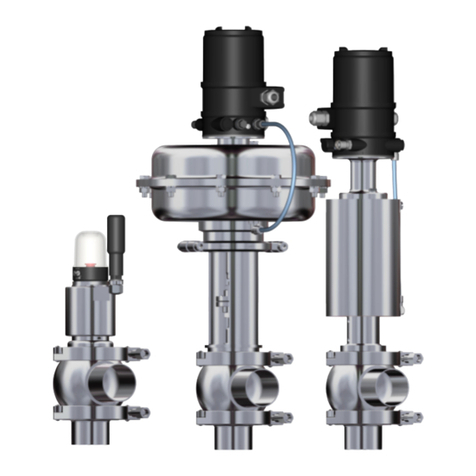
KIESELMANN
KIESELMANN 91 Series operating instructions
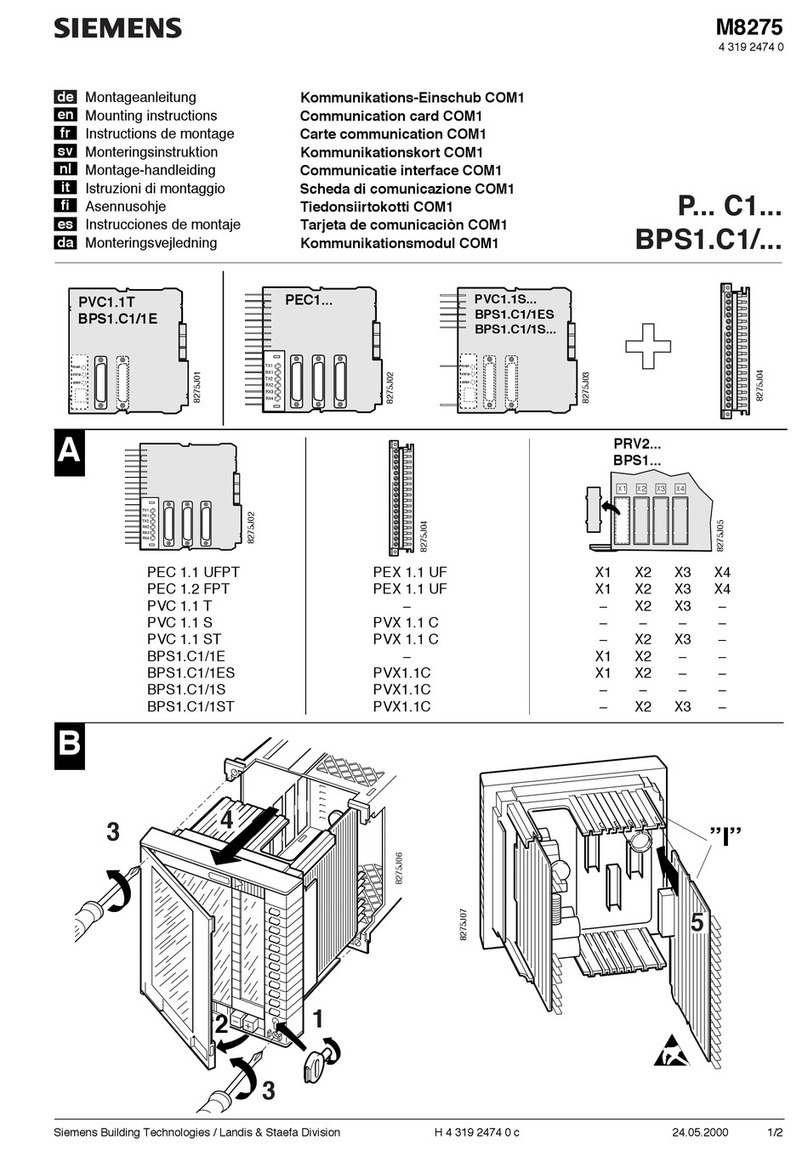
Siemens
Siemens P Series Mounting instructions

AC
AC STAG TUNING Installation and programming instructions
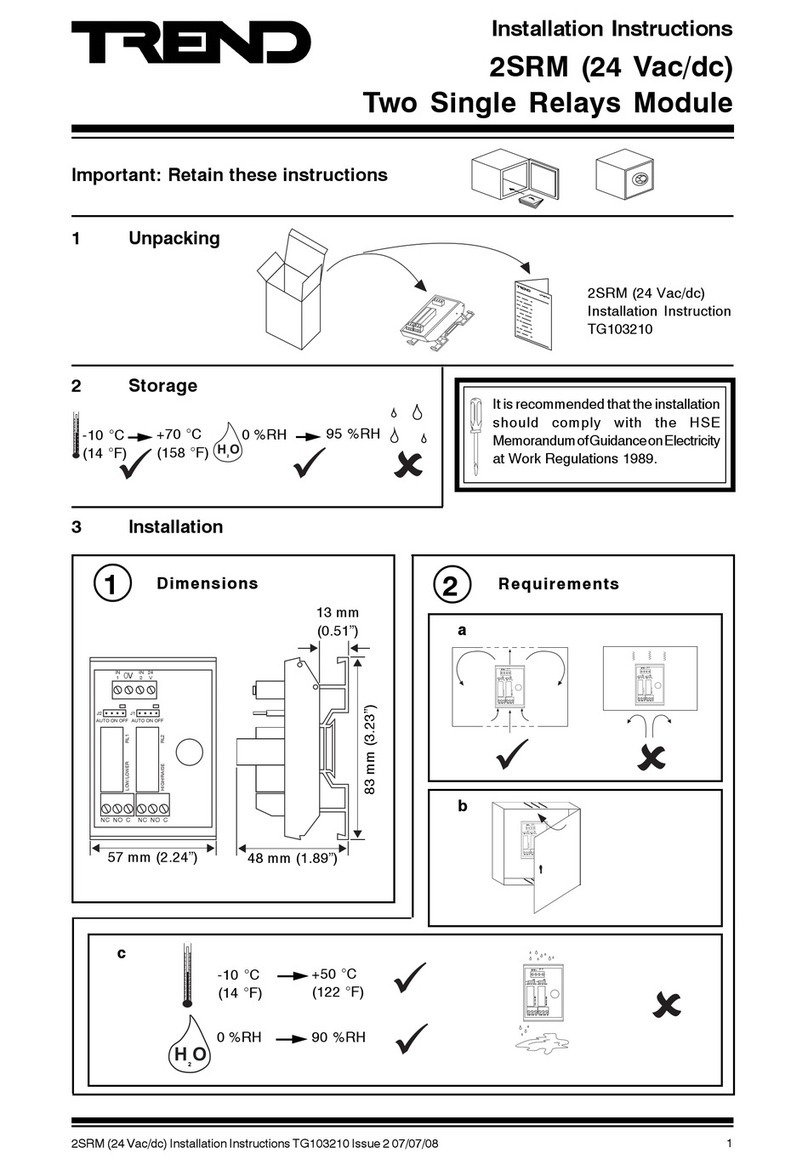
TREND
TREND 2SRM installation instructions
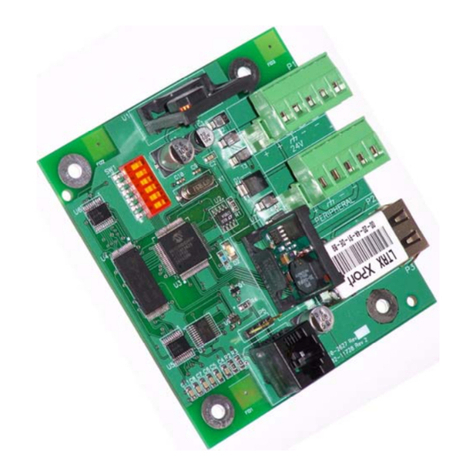
Fike
Fike Lantronix XPort 10-2627 Programming guide
